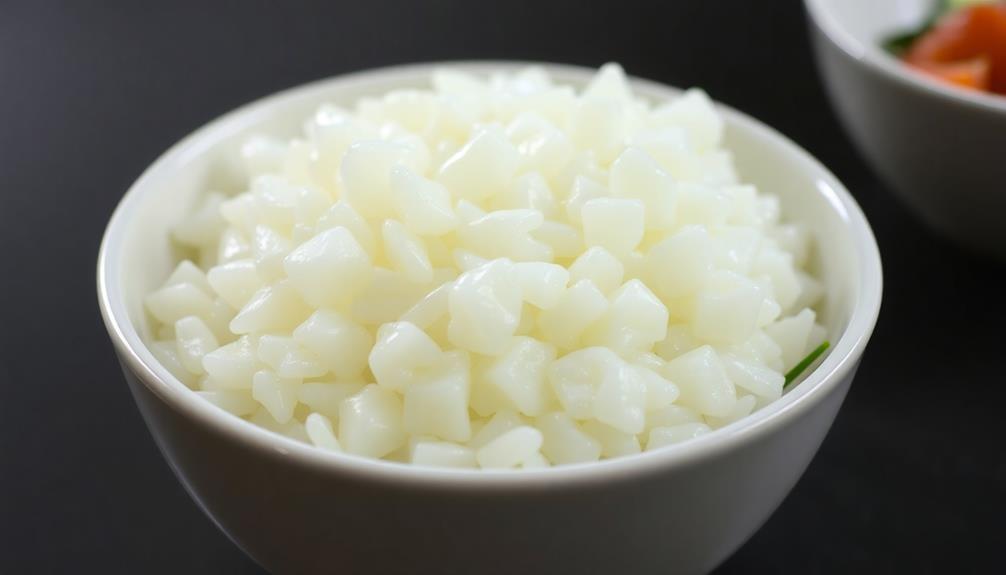Bring the bold, tangy flavors of Korean cuisine to your kitchen with this homemade kimchi recipe. Start by tossing napa cabbage, daikon radish, and scallions with a vibrant blend of garlic, ginger, and gochugaru (Korean red pepper flakes) – the key to that signature spicy kick. Let the mixture ferment for 3-5 days, "burping" the container daily to release gases. Once the perfect tanginess is achieved, refrigerate your kimchi and enjoy it as a condiment, stir-in for fried rice, or side dish alongside grilled meats. Ready to dive deeper into the world of homemade kimchi?
Key Takeaways
- Gather essential ingredients like napa cabbage, daikon radish, scallions, garlic, ginger, gochugaru (Korean red pepper flakes), fish sauce, and salt.
- Prepare the napa cabbage by cutting it into pieces, salting it, and letting it sit to wilt before rinsing and mixing with the other vegetables and seasonings.
- Pack the seasoned cabbage mixture tightly into a container, removing air pockets, and ferment it for 3-5 days at room temperature, "burping" the container daily.
- Refrigerate the fermented kimchi for 2-4 weeks to develop complex flavors and maintain its crunchy texture.
- Customize the kimchi's flavor by adjusting the spice level, experimenting with different vegetables, and incorporating unique seasonings to suit personal preferences.
History
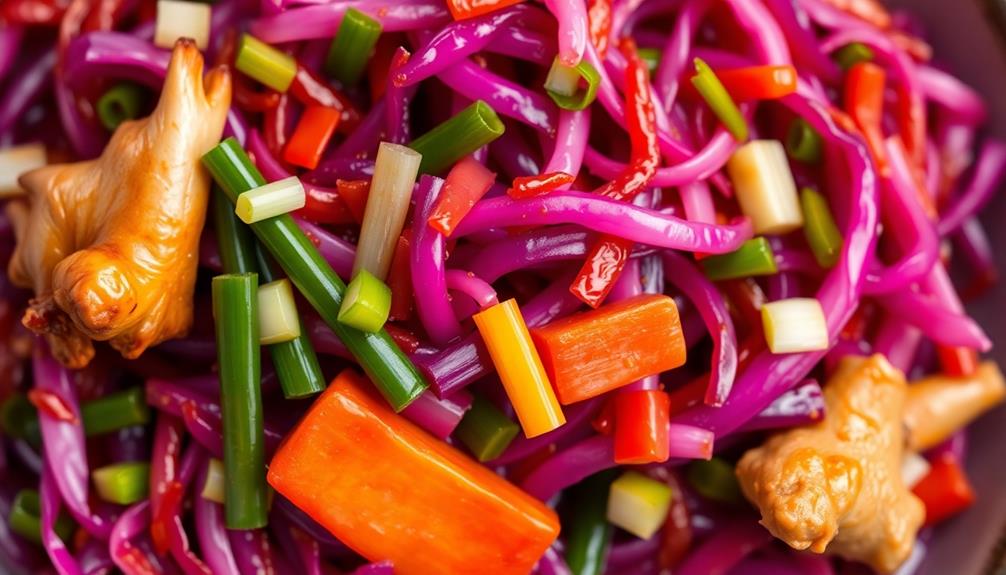
Kimchi, a beloved Korean fermented vegetable dish, has a rich history dating back centuries. This iconic condiment has been a staple in Korean cuisine, with records of its existence as early as the 15th century. Originally, kimchi was made using simple ingredients like napa cabbage, radish, and spices, preserved through natural fermentation.
Over time, the recipe evolved, incorporating regional flavors and techniques. Different parts of Korea developed their own unique variations, reflecting the diverse culinary traditions of the peninsula. Today, there are countless kimchi varieties, each with its own distinct taste and texture.
The process of making kimchi has also been passed down through generations, becoming an integral part of Korean cultural identity. The act of preparing this beloved dish is often a communal experience, bringing families and communities together.
Kimchi's enduring popularity is a testament to its deep-rooted history and the unwavering pride Koreans have in their culinary heritage.
Recipe

Kimchi, a quintessential Korean side dish, is a fermented concoction of spicy, tangy, and crunchy vegetables that has captivated taste buds worldwide. Crafting your own homemade kimchi allows you to customize the flavors and control the ingredients, ensuring a healthier and more authentic culinary experience.
The process of making kimchi may seem daunting, but with a bit of patience and the right technique, you'll be rewarded with a vibrant, flavorful condiment that can elevate a variety of dishes. From grilled meats to fried rice, kimchi's versatility makes it a kitchen staple worth mastering.
Ingredients:
- Napa cabbage, cut into 1-inch pieces
- Daikon radish, julienned
- Scallions, cut into 1-inch pieces
- Garlic cloves, minced
- Ginger, grated
- Gochugaru (Korean red pepper flakes)
- Fish sauce
- Salt
Directions:
In a large mixing bowl, combine the Napa cabbage, daikon radish, and scallions.
In a separate bowl, mix the garlic, ginger, gochugaru, fish sauce, and salt until a paste forms. Gradually add the seasoning paste to the vegetable mixture, using your hands to thoroughly coat and massage the ingredients.
Transfer the seasoned vegetables to a clean, airtight container, pressing down to remove any air pockets. Cover and let ferment at room temperature for 3-7 days, depending on your desired level of tanginess.
When it comes to homemade kimchi, the joy lies in experimenting with different flavor combinations and adjusting the spice level to your personal taste.
Feel free to add other vegetables, such as carrots or bell peppers, to create your own unique twist on this beloved Korean staple. With a little practice, you'll be whipping up batches of delicious, probiotic-rich kimchi that will impress your family and friends.
Cooking Steps
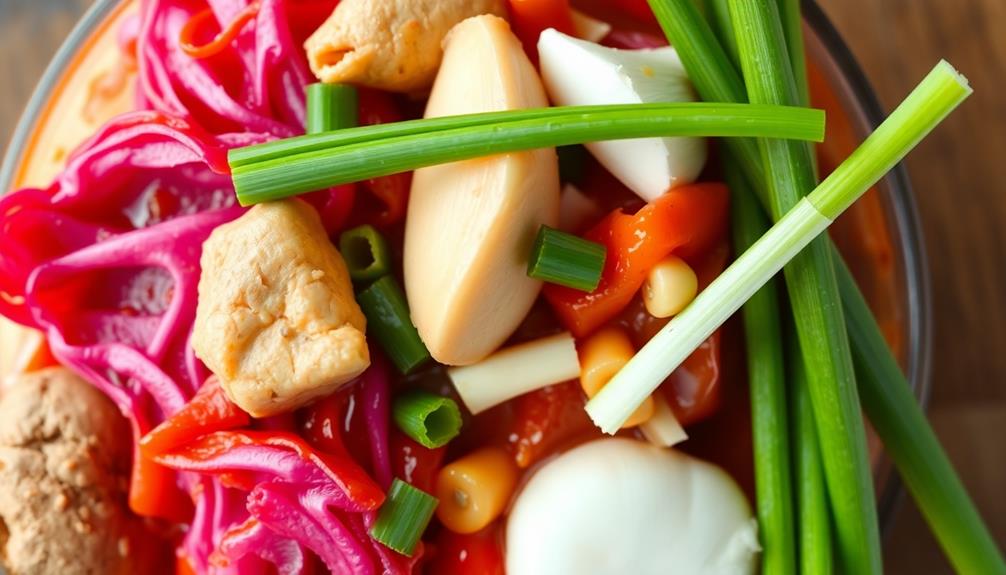
Finely chop the napa cabbage and mix it with salt and chili paste until well-combined.
Pack the mixture tightly into a container, making sure to remove any air pockets.
Allow the mixture to ferment for 3 to 5 days, then refrigerate and store it for 2 to 4 weeks.
Step 1. Finely Chop the Napa Cabbage
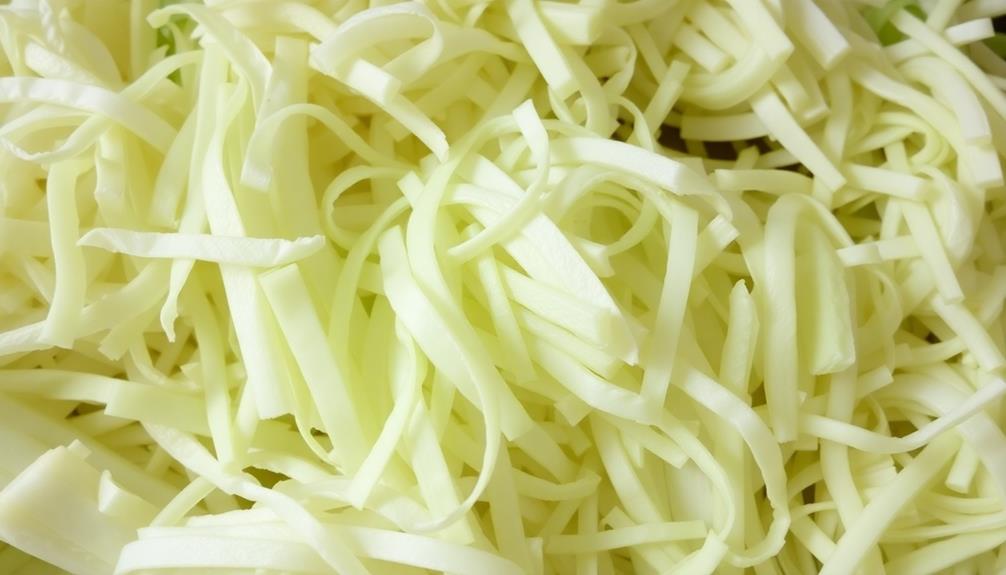
Chopping the dense, crinkly leaves of the Napa cabbage is a crucial step in crafting authentic kimchi. Using a sharp knife, slice the cabbage in half lengthwise, then slice each half crosswise into thin strips about 1/2 inch wide. Be sure to cut the cabbage evenly, as this will ensure consistent texture and cooking throughout the fermentation process.
Next, gather the cabbage strips and roughly chop them into smaller pieces, about 1-2 inches long. This finer chop will help the cabbage break down more quickly during fermentation, allowing the flavors to meld together seamlessly.
Don't worry about being too precise – the key is to create bite-sized pieces that will be easy to scoop and enjoy once the kimchi is ready.
As you chop, keep an eye out for any tough or discolored outer leaves, and discard them. You want to use only the freshest, crispest parts of the cabbage to make the best homemade kimchi.
Step 2. Mix With Salt and Chili Paste

After finely chopping the Napa cabbage, you'll need to mix it with salt and chili paste to begin the fermentation process. Sprinkle the salt evenly over the chopped cabbage, using about 2-3 tablespoons per pound of cabbage.
Gently massage the salt into the cabbage with your hands, ensuring it's well distributed. This will help draw out the moisture and prepare the cabbage for the flavorful chili paste.
Next, add a few tablespoons of your favorite chili paste or gochujang, a traditional Korean chili paste. Mix the chili paste thoroughly into the salted cabbage, coating each piece.
The amount you use will depend on your desired spice level. Start with a smaller amount and add more if you want a bolder, spicier kimchi. Be sure to wear gloves during this step to avoid irritating your skin from the chili.
Once the cabbage is evenly coated, you're ready to pack it into a jar and begin the fermentation journey towards delicious homemade kimchi.
Step 3. Pack Ingredients Tightly in Container
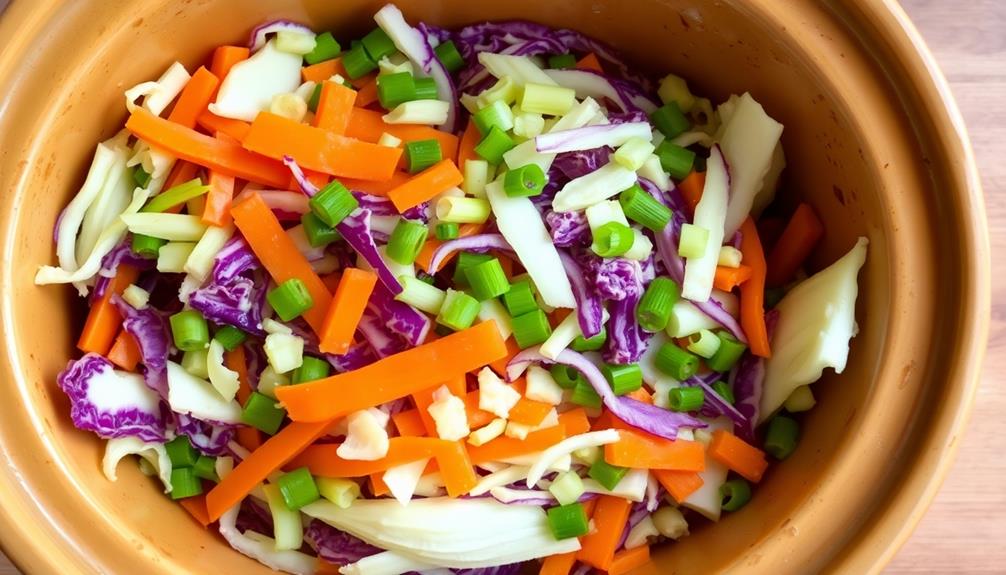
With the salted and seasoned cabbage ready, begin packing the ingredients tightly into a clean, glass container or jar.
Start by adding a layer of the cabbage mixture, pressing it down firmly with your hands or a spoon to remove any air pockets. Continue adding layers, packing each one tightly to ensure the ingredients are snug and secure.
As you layer, sprinkle in some of the green onions, garlic, and ginger. This will help distribute the flavors throughout the kimchi.
Be sure to press down on each layer to eliminate air bubbles, which can lead to spoilage. Fill the container up to about 1 inch from the top, leaving room for the vegetables to expand during fermentation.
Step 4. Ferment the Mixture for 3-5 Days
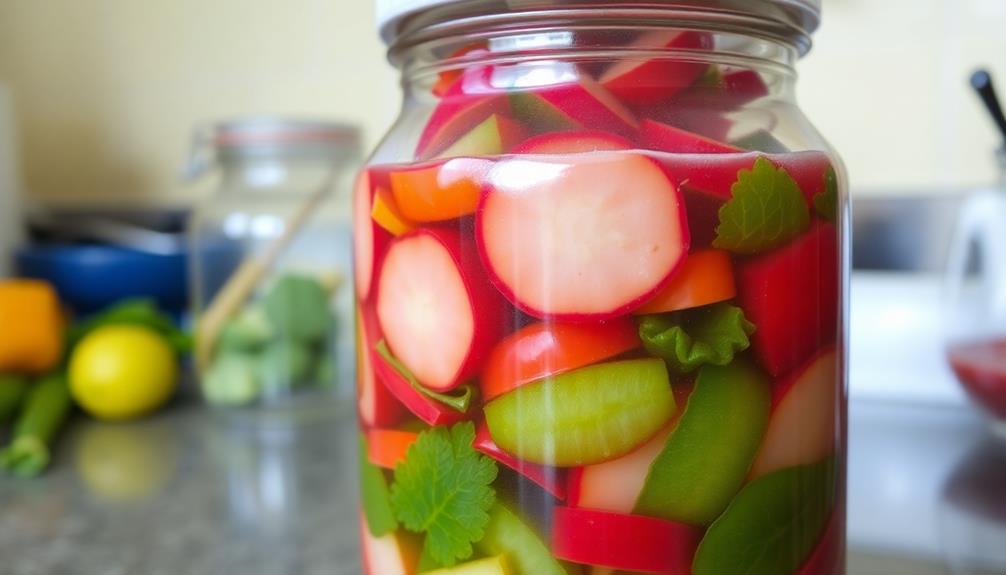
Once the ingredients are tightly packed, it's time to let the fermentation process begin.
Place the sealed container in a cool, dark place, like the back of your pantry. Over the next 3-5 days, the vegetables will start to break down and release gases. You'll notice bubbles forming, which is a good sign!
Every 12-24 hours, open the container briefly to "burp" it, allowing the gases to escape. This prevents the container from building up too much pressure.
You can also give the mixture a gentle stir to redistribute the ingredients.
As the days pass, the kimchi will develop its signature sour, spicy, and funky flavors. After 3-5 days, the fermentation should be complete.
The kimchi will be pleasantly tangy and crunchy. At this point, you can transfer the container to the refrigerator to slow down the fermentation process.
Enjoy your homemade kimchi in a variety of dishes!
Step 5. Refrigerate and Store for 2-4 Weeks
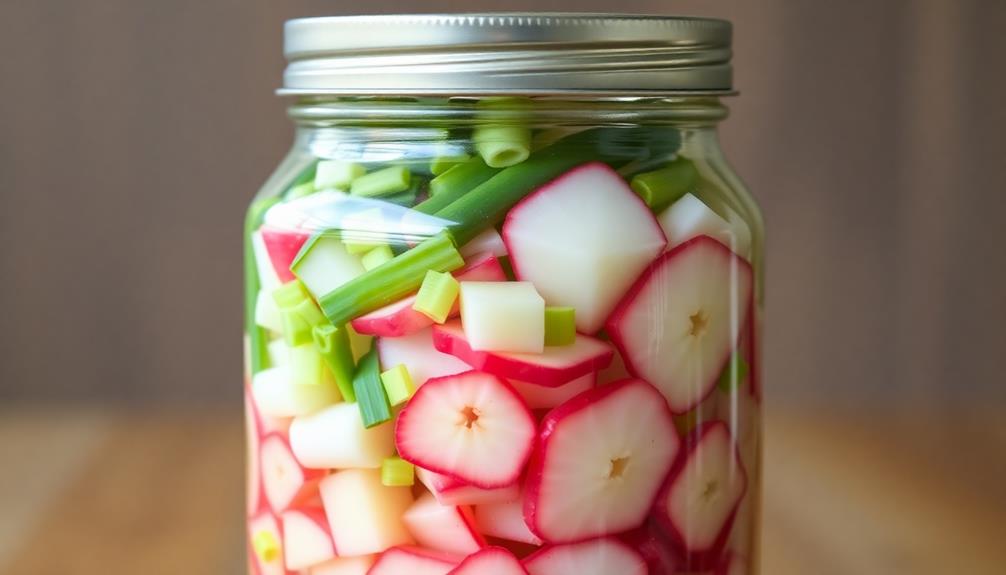
The fermentation process is now complete, and it's time to move your homemade kimchi to the refrigerator. After 3-5 days of fermentation, your kimchi is ready to be transferred to an airtight container and refrigerated. This will slow down the fermentation process, preserving the flavors and textures you've worked so hard to develop.
When refrigerating, be sure to pack the kimchi down firmly, removing any air pockets. This will help maintain the crunchy texture you desire.
The kimchi can now be stored in the fridge for 2-4 weeks, though you may find it continues to ferment and develop more complex flavors the longer it sits. Feel free to taste it periodically and adjust the length of fermentation to suit your personal preferences.
Final Thoughts
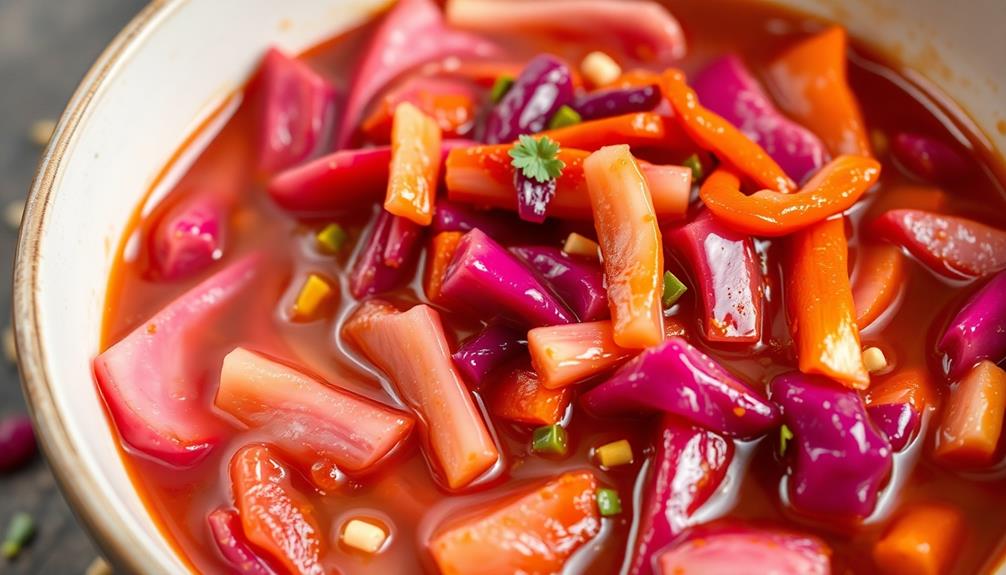
Homemade kimchi is a rewarding process that can be customized to your personal taste preferences.
Once you've mastered the basic technique, the possibilities for experimentation are endless. Try swapping out the cabbage for other veggies like radish, cucumber, or even brussels sprouts.
Adjust the spice level by adding more or less gochugaru (Korean red pepper flakes). You can also experiment with different seasonings, like garlic, ginger, or fish sauce, to create your signature blend.
Frequently Asked Questions
How Long Does Homemade Kimchi Last in the Refrigerator?
Homemade kimchi can typically last 4-6 weeks in the refrigerator when stored properly. The fermentation process allows it to maintain its flavor and texture for an extended period. Be sure to keep it tightly sealed and refrigerated to maximize its shelf life.
Can I Use a Different Type of Cabbage in the Recipe?
You can certainly use a different type of cabbage in your homemade kimchi recipe. While the traditional Napa cabbage is common, other varieties like green or red cabbage can work well too, just adjust the seasoning to your taste.
Is It Necessary to Use Korean Red Pepper Powder?
You don't necessarily need to use Korean red pepper powder. You can substitute other types of chili flakes or powder, but they may not provide the same authentic Korean flavor. Experiment to find the taste you prefer.
Can I Ferment the Kimchi at Room Temperature?
You can ferment the kimchi at room temperature, but it's important to monitor the process closely. The fermentation time may vary depending on the temperature, so keep a close eye on the flavor and texture development.
How Can I Adjust the Spice Level of the Kimchi?
You can adjust the spice level of your kimchi by adding more or less gochugaru (Korean chili flakes) to the recipe. Start with a smaller amount and increase it to your desired heat level.




